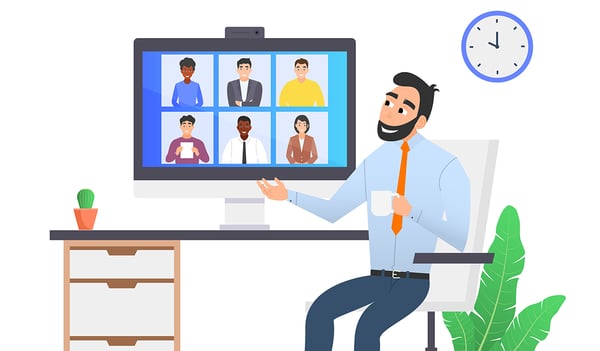Even before experiencing it myself, I had the utmost respect for associations that have had to convert their live events into virtual events due to the pandemic. However, I had only seen the consultant’s side to our virtual event technology strategy services: we assess the situation, look at requirements, create a strategy and plan, and vet solutions. We don’t often get to execute the plan and experience the final event.
As a board member for an association that raises money for scholarships for LGBTQ youth in my community, I finally had my chance to work on the process from start to finish. Even though I had a bit of a leg up when it came to figuring out the “what are we trying to achieve” and going through some of DelCor’s recommended considerations when starting to produce a live event, the process was still a lot of work.

Translating Live to Online
We started by forming a small committee to work on the event. We analyzed our past live events and set realistic goals for how we would ask for donations and how much we might expect to receive. We looked at our membership lists and decided we could market to a wider audience online than we could with our set live event count based on occupancy of our venue. We cleaned up our membership list and devised strategies to build our marketing efforts beyond our membership base.
Next, we analyzed our live program to determine what had resonated with donors at past in-person events and how we could translate that to a virtual event. We looked at how similar organizations were hosting virtual events, noted the vendor platforms that they used, and set up demonstrations with those vendors.
Selecting the Platform
During the demonstrations, we asked each vendor a set of uniform questions that we had prepared in advance. Ultimately, many of the platforms we looked at could perform similar functions for a similar price. Our choice came down to our perception of which platform seemed to be the easiest to work with. The platform we chose displayed most features in the main screen so there were not as many screens to navigate.
Building the Event
After the system selection, we were able to start the heavy lifting of creating the program. We ended up creating two separate events: a silent auction that ran for two weeks and an hour-long live fundraising event. We procured auction items for the silent auction as usual, but used the platform to display the pictures, descriptions, and item values. The setup of the silent auction went smoothly and the platform performed well.
For the live event, we wanted to pre-record most of the introductions, awards, speeches, and entertainment, so we developed a plan to sequence the events and a script for the segments. We had multiple speakers, award winners to introduce and thank, and other entertainment—including some hilarious comedians who added a lot to the event.
Most speakers submitted a recording on their phones and, in some cases, we had professional video recording help. We used cameo.com to hire celebrities to record introductions—which was a big hit. The last quarter of our virtual event was a livestream with a paddle raise to raise money for the scholarship fund.
Test, Test, Test
We tested our transition from recording to live several times and then tested every way we could break the system on the day of the event. We involved the vendor in the tests and they were able to make real-time changes for a better user experience. We also worked with the talent that would be part of the livestream to make sure they knew exactly how their parts should be delivered. Even with all that testing, we knew that there could still be issues during the event, so we set up a back-channel Zoom call so we could communicate and resolve any issues as they occurred.
What We Earned and What We Learned
Overall, the event was a success. The attendees loved the format and gave us rave reviews. Many of our longstanding members posted selfies watching the event at home. We were able to more than offset our costs through the silent auction and sponsorships from local businesses. The livestream paddle raise generated 70% of our total goal for the scholarship fund. In addition, we will have access to the fundraising software for an entire year, so we will be able to host other virtual events to make up the 30% remaining to meet our scholarship giving goal for next year.
The pandemic may have forced us to alter the way we reach our members, but it has also given us a push to be creative and flexible as we adapt and learn as we go. I am looking forward to maintaining that attitude as we brainstorm new fundraising ideas for next year.
Subscribe to our YouTube channel.

